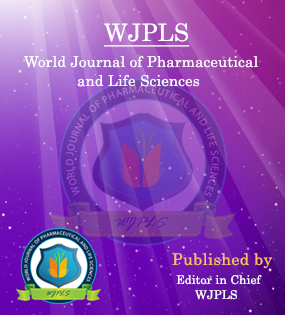Abstract
MICROBIOLOGICAL PROFILE OF VAGINAL INFECTIONS: THE EXPERIENCE OF THE AVICENNE MILITARY HOSPITAL IN MARRAKECH
Raja Nakhli*, Mouhcine Miloudi, Youssef El Kamouni, Said Zouhair and Lamiae Arsalane
ABSTRACT
Introduction: Infections of the female genital tract represent a public health problem in current practice. Initial treatment of vaginal infections is usually probabilistic. The benign nature of the condition and the safety of topical medications allow for immediate management, even if empirical, in order to respond quickly to the patient's discomfort. Objective: The aim of our study is to establish the microbiological profile of vaginal infections and to evaluate the resistance of isolated bacteria to antibiotics. Methods: We conducted a retrospective descriptive study over a period of 5 years, from January 15, 2013 to December 14, 2017, conducted by the Bacteriology Department of the Avicenne Military Hospital in Marrakech, on hospitalized or outpatients who presented symptoms of vaginal infection. The culture was done by aerobic germ isolation methods. Germ identification and antibiotic susceptibility testing were performed on the Becton Dickinson Phoenixi1000 automated system. Results: During the study period we took 393 samples of which 101 or 25.69% were positive. Direct examination showed the predominance of Gardnerella vaginalis in 33.89% of the samples, Gram-positive Coccis, yeasts and Gram-negative bacilli represented respectively 18.68%, 16.94% and 5.57% of the samples, with a rate of Trichomonas vaginalis of 2.1%. Abundant and polymorphic flora suggestive of anaerobes were found in 3.93% of cases. The culture was non-significant in 74.30%, monomicrobial in 23.15% of cases, and polymicrobial in 4.83% of cases. In total the number of isolated germs was 177, corresponding to 19 different species. The rates of isolation of Gram-positive Coccis and Gram-negative bacilli were 36.15% and 12.99% of cases. The distribution by species showed the predominance of Streptococcus agalactiae which represented 25.42% of the isolates, followed by Escherichia coli and Klebsiella pneumoniae with rates of 3.95%. The isolation rate was 22% for Chlamydia trachomatis, 14.35% for Ureaplasma urealyticum and 4% for Mycoplasma hominis. The sensitivity rates of the isolated enterobacteria strains were 86.36% for amikacin, 82% for aztreonam, 72% for imipenem, 68% for ciprofloxacin, 55% for cotrimoxazole and 41% for amoxicillin-ampicillin. The sensitivity rates of isolated Gram-positive Coccis were 100% for moxifloxacin, 97% for Peni G and vancomycin, 91% for clindamycin, 84,72% for erythromycin and cotrimoxazole, and 8% for tetracyclines. Conclusion: The results of this study show the frequency of vaginal infections, and the predominance of bacterial vaginosis with Gardnerella vaginalis. The germs isolated during bacterial vaginitis are represented essentially by Streptococcus agalactiae, E.coli and Klebsiella pneumoniae. Apart from treatment, genital infections, mainly bacterial vaginosis, can lead to complications involving the upper genital tract. For pregnant women, their role in the risk of chorio-amnionitis and premature deliveries is established.
[Full Text Article] [Download Certificate]WJPLS CITATION 
| All | Since 2020 | |
| Citation | 590 | 424 |
| h-index | 12 | 10 |
| i10-index | 17 | 14 |
INDEXING
NEWS & UPDATION
BEST ARTICLE AWARDS
World Journal of Pharmaceutical and life sciences is giving Best Article Award in every Issue for Best Article and Issue Certificate of Appreciation to the Authors to promote research activity of scholar.
Best Article of current issue
Download Article : Click here





